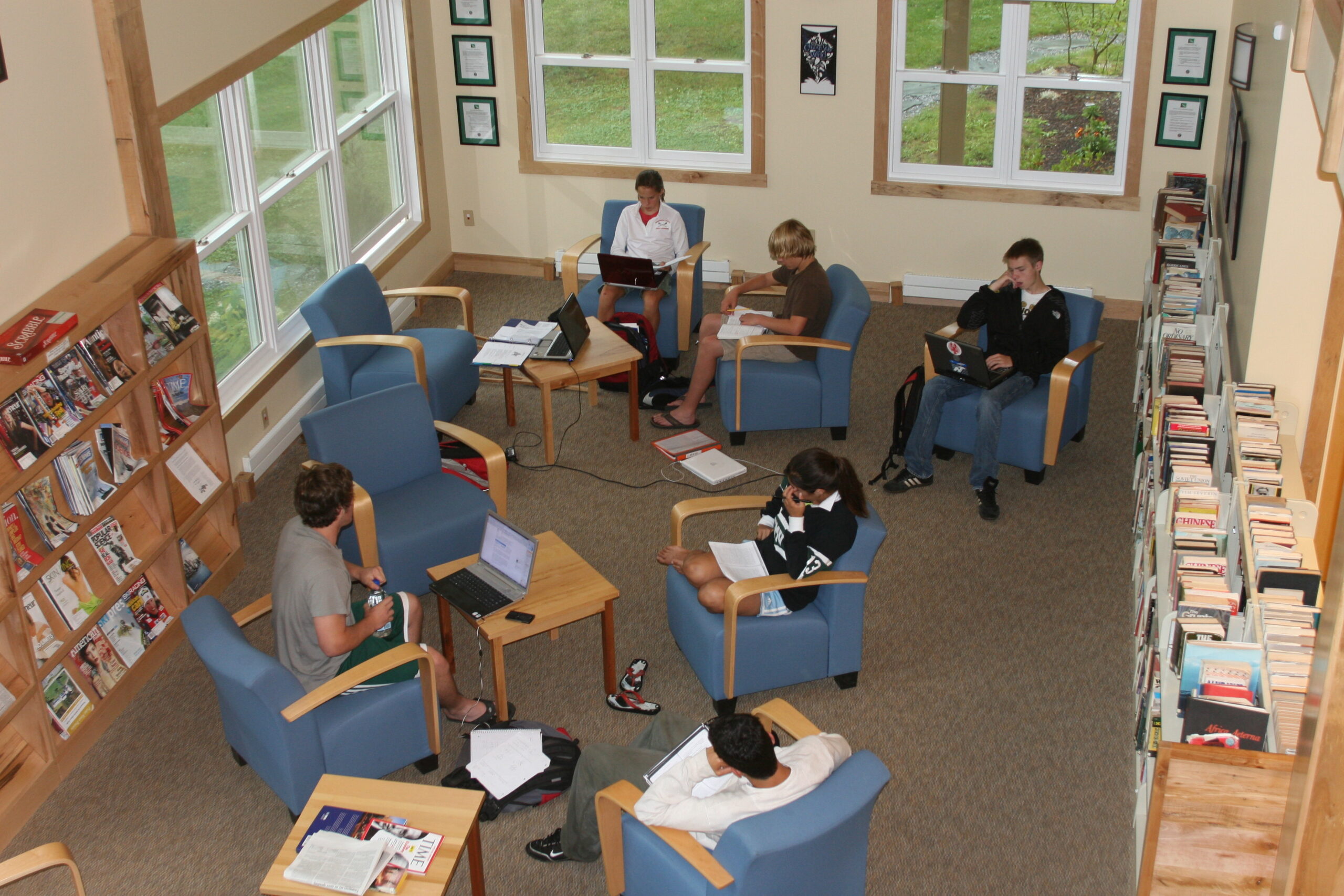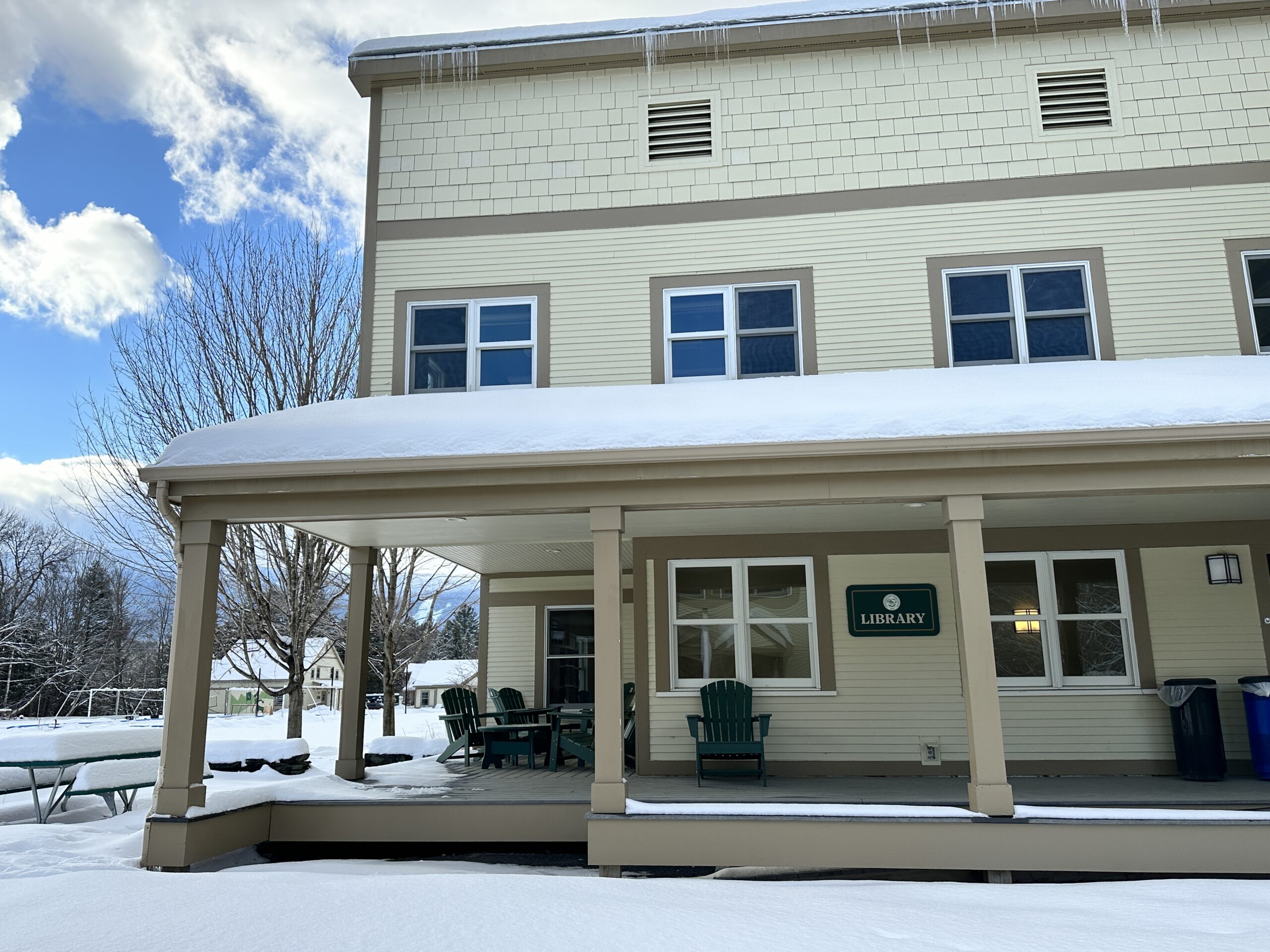LEADING WITH GREEN AT GMVS — FACT 20 of 50
In 2009 when the addition to the Farmhouse Building was completed and renamed The Library, GMVS made a bold statement about its commitment to the environment. The roughly 6,000-square-foot structure boasts a number of features that lessens its impact on the environment, and as a result, was awarded LEED Certification by the U.S. Green Building Council (USCBC). At the time of completion, the GMVS Library was 1 of only 16 buildings certified in the state of Vermont, and GMVS had the only LEED certified educational building.
Choosing to build green was in part about making environmentally sound decisions, but also a construction project used as a curriculum component for our students. The LEED process helped GMVS create a hands-on application for environmental concepts like carbon footprints, recycling, water-use reduction and energy efficiency. The building mobilized teachers to find ways to incorporate environmental education into their particular disciplines.
The entire GMVS community was invested in the process: Students, parents and staff all contributed to researching and making decisions that impacted green building choices, and all of our contractors were committed to honoring those choices and thinking creatively about any challenges we faced. Two alumni parents were critical to our success: In addition to Mac Rood P’06 who designed the building for us, John Stetson P‘07, of Engleberth Construction, worked tirelessly as a consultant for us throughout the process.
The building was designed by Mac Rood of Bast and Rood Architects, Hinesburg, to achieve LEED certification for energy use, lighting, water and material use as well as incorporating a variety of other sustainable strategies. LEED verifies environmental performance, occupant health and financial return. LEED was established for market leaders to design and construct buildings that protect and save precious resources while also making good economic sense.
LEED certification of the GMVS library was based on a number of green design and construction features that positively impact the project itself and the broader community. These features included:
- Commitment to maintaining vegetated open space equivalent to nearly half the project’s site area
- Water use reduction through the inclusion of water-efficient bathroom fixtures
- Commitment to using renewable energy
- Reuse of 95 percent of the existing building structure within the renovation and new construction, made possible by careful demolition and exhaustive recycling efforts from contractors
- Commitment to Indoor Environmental Quality
For GMVS, this meant a host of innovations.
- Bathrooms boast toilets with two flush options to reduce water consumption, especially important for a school that depends on wells for its water supply.
- Lights using high-efficiency bulbs operate on sensors and huge windows overlooking athletic fields take advantage of daylight, cutting down further on electricity consumption.
- A wraparound porch features decking made of recycled material; a durable fiber cement siding is used on the exterior of the new building.
- Maple harvested from property owned by former GMVS headmaster Dave Gavett was used in study carrels, window moldings, and other places.
- The maple was milled on-site which reduced trucking and made use of wood that otherwise might not be considered viable for construction.
- Low VOC paints and materials cut down on the noxious fumes visitors breathe.
- A high-efficiency propane boiler provides heat and is controlled through a software program that allows careful monitoring of temperature throughout the building. Spray foam insulation reduces heat loss.
- Carbon dioxide monitors and an air circulation system keep indoor air quality high.
- Outside, native plants and stone walkways, were used for landscaping, instead of asphalt.
The building, which was officially dedicated by Governor Jim Douglas in May 2007 remains the cornerstone of the GMVs academic program with classrooms, offices and study areas.


